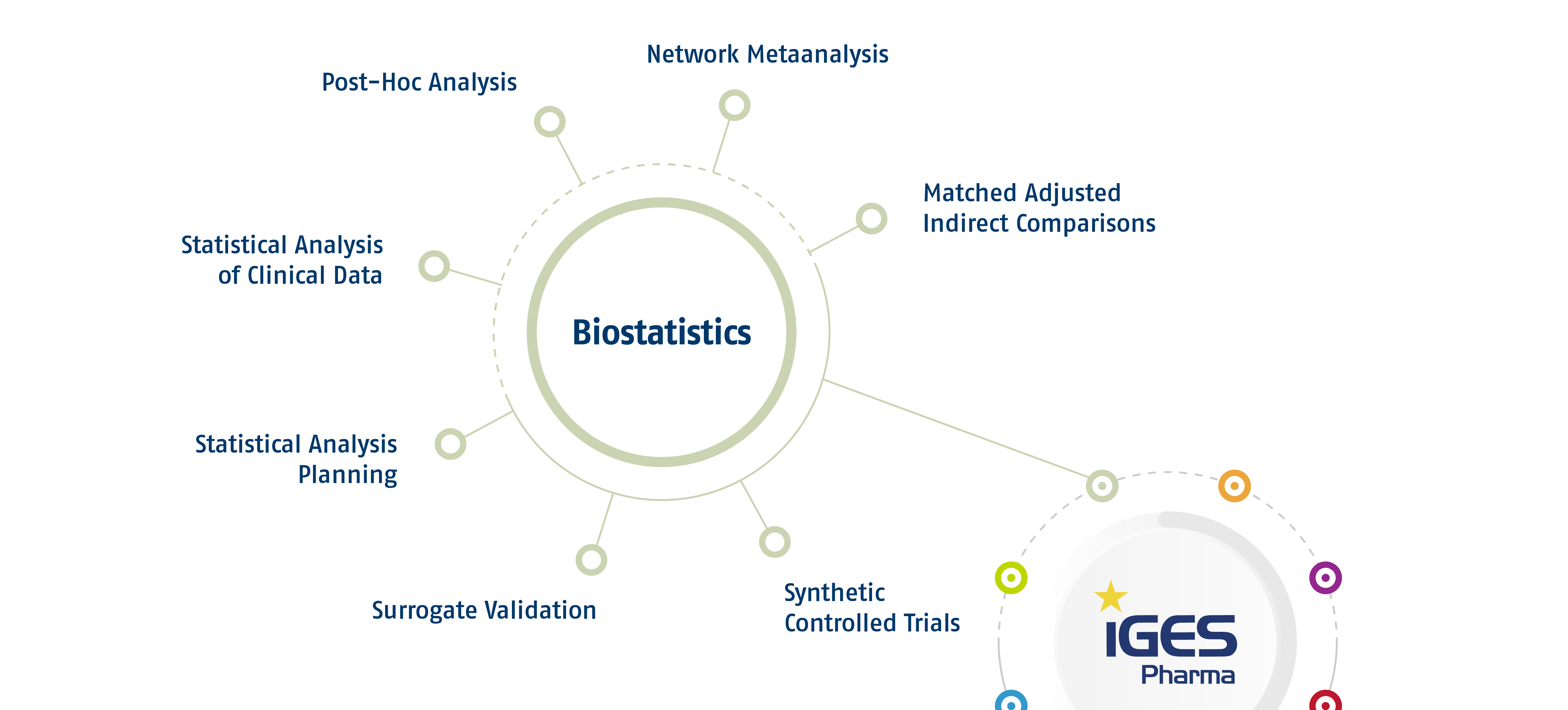
Biostatistics
IGES operates its own in-house biostats team which is well experienced in the statistical analysis around the launch of innovative pharmaceuticals. Provided with the clinical trial data our team can perform the necessary post-hoc analysis for local HTA submission as well as network meta-analysis, indirect comparisons, or surrogate validations.
Products
In the situation of lacking direct evidence, i.e. the absence of head-to-head trials comparing the interventions of interest, methods of indirect comparisons are applied. Simple adjusted indirect comparisons or complex evidence networks are set up to gain statistical inference using appropriate statistical and technical solutions.
If individual patient data are available, the bias in indirect comparison is reduced by the application of MAIC, that is the matching of patients by their baseline characteristics.
In the case that no comparable clinical trials are available for direct or indirect comparisons towards the intervention of interest, a clinical trial can be emulated by the provision of external controls from disease registries, patient charts, and other sources. These collectives can be weighted and trimmed by means of appropriate statistical techniques in order to guarantee non-biased and robust estimators for efficacy and safety.
An endpoint regarded as patient-relevant is not always available in published evidence and thus, it has to be investigated if the available information can serve as a surrogate. Indication- and intervention-specific published evidence is identified in systematic literature reviews and synthesized by means of correlation-based statistical methods to provide evidence for the informative equivalence of study endpoints.
According to local requirements, statistical analyses are to be pre-specified before a clinical investigation starts. Statistical study planning begins with the definition of appropriate study endpoints, generating expectations based on published literature and professional experience in order to plan minimal sufficient sample sizes allowing to show an effect within the framework of assumed statistical errors. Further analyses of efficacy and safety endpoints demand statistical strategies and their meticulous formulation in analysis plans.
All pre-specified analyses are performed in accordance to statistical analysis plans and using appropriate techniques and statistical software. All generated output is processed and transferred for further preparation and reporting. Moreover, support is provided for the interpretation of generated results.
Trial results and local needs often yield subsequent problems and questions to be clarified. Therefore, post-hoc analyses are conducted regarding subgroup effects, robustness of estimates, and/or other sensitivity issues.
 Contact
Contact